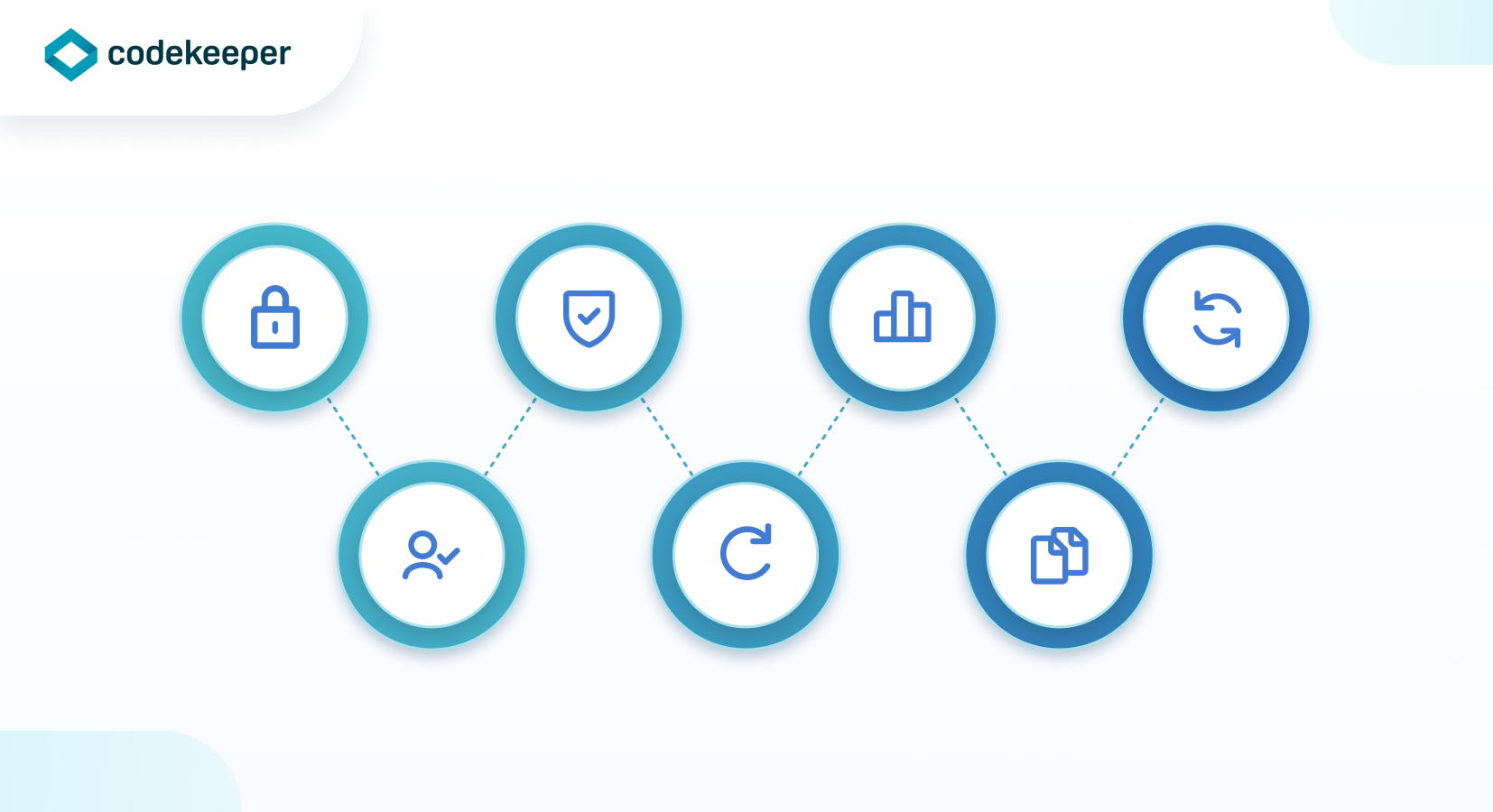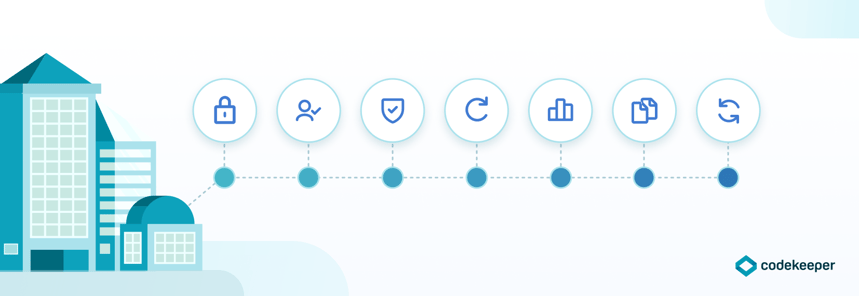How to Protect Your Source Code with an Escrow Agreement
In this article, we look at how you can make sure you are in compliance and protect your source code with source code escrow.

By Jo Rust
As technology continues to advance, businesses rely more and more on software to operate effectively. However, as a business owner or developer, it's essential to ensure that your software and source code are protected and secure. An escrow agreement can help you accomplish this goal by providing a third-party custodian for your source code and ensuring that it remains accessible to you in the event of unforeseen circumstances. In this article, we'll outline how to create an effective escrow agreement to protect your source code and ensure compliance.
What is an Escrow Agreement?
An escrow agreement is a legal document that specifies the terms of the arrangement between a software developer or vendor and a third-party escrow agent such as Codekeeper. The agreement states that the developer or vendor will deposit the source code, as well as any other relevant materials, with us as the escrow agent. In exchange, we will hold the materials in trust and release them to the developer or vendor under certain agreed-upon circumstances.
Why is an Escrow Agreement Important?
An escrow agreement is important for several reasons. First, it protects the developer or vendor's intellectual property rights by ensuring that their source code is safe and secure. Second, it ensures that the source code is accessible to the developer or vendor in the event of unforeseen circumstances such as bankruptcy, acquisition, or discontinuation of the software. Third, it can help to ensure regulatory compliance, particularly in industries that are heavily regulated.
Steps to Create a Software Escrow Agreement
-
Identify the Key Parties
The first step in creating a software escrow agreement is to identify the key parties involved. These parties include the software developer, the escrow agent, and the beneficiary.
The software developer is the party that owns the source code and other materials that will be deposited with the escrow agent. The escrow agent is the third-party custodian who will hold the materials in trust. The beneficiary is the party that will receive access to the materials under certain specified circumstances, such as the bankruptcy of the developer or vendor or the discontinuation of the software.
-
Specify the Deposited Materials
The next step is to specify the materials that will be deposited with the escrow agent. This should include the source code, any accompanying documentation, and any other materials that are necessary for the software to function properly. The agreement should also specify how often the developer is required to update the deposited materials.
-
Define the Release Conditions
The release conditions are the circumstances under which the beneficiary will be granted access to the deposited materials. Typically, the release conditions will be triggered by certain events such as bankruptcy, discontinuation of the software, or failure to meet agreed-upon service level agreements.
The agreement should also specify the process for requesting the release of the deposited materials, including any timeframes and documentation requirements.

- Outline the Escrow Agent's Responsibilities
The escrow agent's responsibilities should be clearly defined in the agreement. This should include how the source code escrow agent will store and protect the deposited materials, as well as any fees that the developer will be required to pay for the escrow services.
The agreement should also specify how the escrow agent will verify the authenticity of any release requests, and how the escrow agent will ensure that the deposited materials are not released to unauthorized parties.
-
Specify the Beneficiary's Responsibilities
The beneficiary's responsibilities should also be defined in the agreement. This should include how the beneficiary will access the deposited materials, as well as any limitations on the use of the materials.
The agreement should also specify how the beneficiary will be required to maintain confidentiality and security when accessing the deposited materials.
-
Establish a Dispute Resolution Process
A dispute resolution process should be established in the agreement to provide a mechanism for resolving any conflicts that may arise. This can include mediation, arbitration, or other dispute-resolution methods.
-
Include Appropriate Legal Language
The software escrow agreement is a legal document, and as such, it is essential to include appropriate legal language. This can include provisions for indemnification, limitations of liability, and warranties.
It is important to consult with legal counsel to ensure that the language included in the agreement is legally enforceable and provides adequate protection for all parties involved.
-
Review and Sign the Agreement
Once the agreement has been drafted, it is important to review it thoroughly to ensure that all parties agree to the terms and conditions. Any questions or concerns should be addressed before signing the agreement.
It is also essential to ensure that all parties sign the agreement and that each party receives a copy of the executed agreement for their records.
Our state-of-the-art online application and onboarding protocols allow for a hassle-free setup.
Conclusion
Creating a software escrow agreement is an essential step for protecting your intellectual property and ensuring that your source code remains secure. By identifying the key parties, specifying the deposited materials, defining the release conditions, outlining the escrow agent's responsibilities, specifying the beneficiary's responsibilities, establishing a dispute resolution process, including appropriate legal language, and reviewing and signing the agreement, you can create a robust and effective software escrow agreement that meets the needs of all parties involved.
Codekeeper guides you through every step of the process and because we help you set up the escrow agreement you don’t need to worry about paying additional expensive lawyer’s fees.
By taking these steps, you can rest assured that your source code will remain secure and accessible in the event of unforeseen circumstances. Book a no-strings-attached demo call with one of our experts to discuss your specific needs by clicking on the button belwo.
Codekeeper : State-of-the-art software escrow solutions




